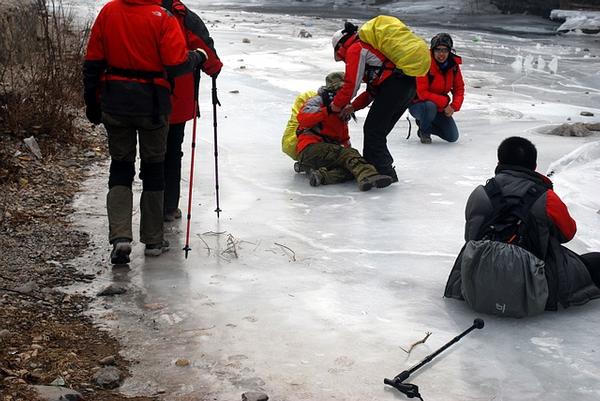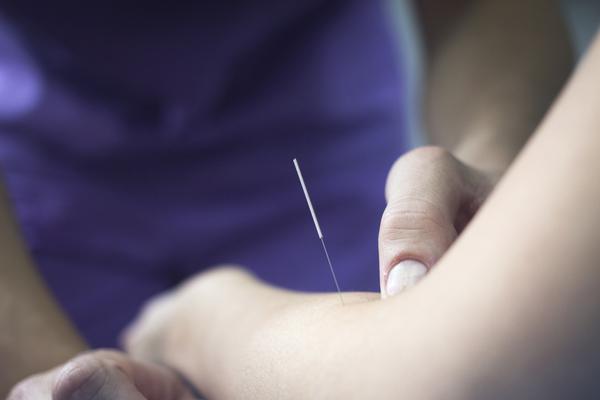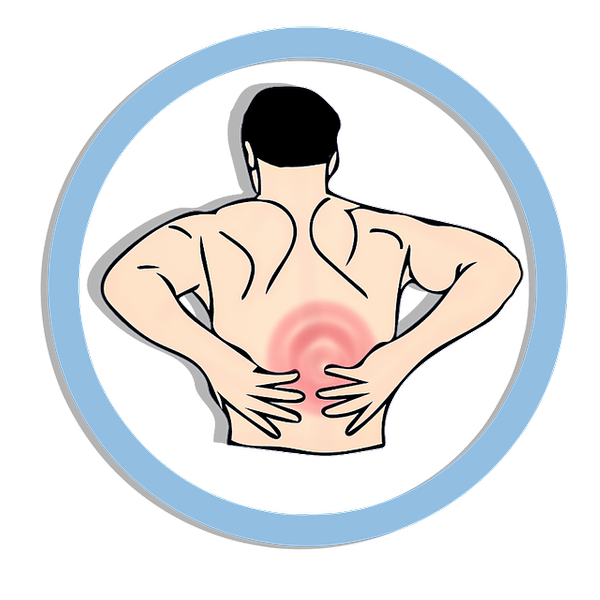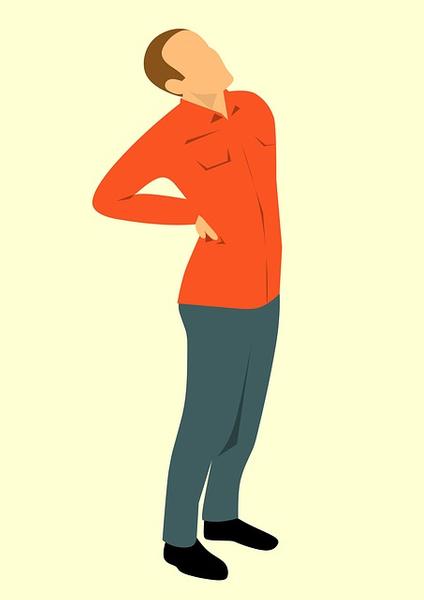Latest News and Information
When you should see a doctor for your winter accident
January 2, 2020
Winter is a great time - with the holiday season comes food, family, friends, and fun. But the slick weather conditions can also lead to accidents. While some slip and falls are just that, others can end up injuring you more than you know or expect. But when do you know when you should see a doctor? We put together our guidelines, but keep in mind you should always listen to your body. Everyone is different, and we recommend seeing a doctor if you are questioning aches/pains you are feeling.
First, let’s talk about the most serious of injuries - a fall that involves hitting your head. These can result in even life-threatening conditions and we recommend seeing a doctor immediately. You should go to the emergency room if you experience any of the following after your fall:
While none of this may happen immediately, you should carefully monitor yourself for the day or two after your incident. If you start to develop intense headaches, vomiting, loss of consciousness, loss of balance, or difficulty breathing, we recommend that you visit the emergency room. Now that we’ve taken care of the worst of the worst, let’s chat about when you should see a primary care doctor. All falls don’t result in head injury, several of them might result in you injuring another limb or part of your body. If you experience any of the following, it’s time to see your doctor!
Once again this is not an exhaustive list of when you should see your primary care physician, as everyone reacts differently to injury, but it certainly is one that we want you to be aware of. If you have any doubts about your injuries, or how your body is reacting after a fall, see a doctor promptly. If you have seen a doctor, and have any additional questions concerning an injury you’ve sustained, we recommend that you reach out to your primary care physician. Your primary care physician can help guide you on the right path, and ensure that your injury is nothing serious. If you do develop an injury, one that might require physical therapy, we are here to help.  At North Platte Physical Therapy, we are here to help meet your needs. We serve the communities of Wyoming and Nebraska with 22 clinics offering a full range of physical therapy services. Contact us today for more information.
Â
Read More...
First, let’s talk about the most serious of injuries - a fall that involves hitting your head. These can result in even life-threatening conditions and we recommend seeing a doctor immediately. You should go to the emergency room if you experience any of the following after your fall:
- AmnesiaÂ
- Loss of consciousness
- Seizure
- Vomiting
- Excessive bleeding (bleeding over 15 minutes while applying pressure)
While none of this may happen immediately, you should carefully monitor yourself for the day or two after your incident. If you start to develop intense headaches, vomiting, loss of consciousness, loss of balance, or difficulty breathing, we recommend that you visit the emergency room. Now that we’ve taken care of the worst of the worst, let’s chat about when you should see a primary care doctor. All falls don’t result in head injury, several of them might result in you injuring another limb or part of your body. If you experience any of the following, it’s time to see your doctor!
- Unable to put weight on your injured body part
- Severe pain
- Unable to move the body part
- You are prone to fractures, breaks, and severe bruising after injuries
Once again this is not an exhaustive list of when you should see your primary care physician, as everyone reacts differently to injury, but it certainly is one that we want you to be aware of. If you have any doubts about your injuries, or how your body is reacting after a fall, see a doctor promptly. If you have seen a doctor, and have any additional questions concerning an injury you’ve sustained, we recommend that you reach out to your primary care physician. Your primary care physician can help guide you on the right path, and ensure that your injury is nothing serious. If you do develop an injury, one that might require physical therapy, we are here to help.  At North Platte Physical Therapy, we are here to help meet your needs. We serve the communities of Wyoming and Nebraska with 22 clinics offering a full range of physical therapy services. Contact us today for more information.
Â
What You Should Know About Dry Needling from your Wyoming and Nebraska Physical Therapy team
December 18, 2019
If you have suffered an injury, in pain from an old injury, or just dealing with chronic discomfort, the suggestion for dry needling might have come up. This is a fairly new treatment that has been gaining in popularity in the past few years. Before you run to the computer to do an online search for dry needling in Wyoming or Nebraska, let’s take a look at the history of dry needling and what it might be able to do for you.
The History Dry Needling
The discovery of dry needling dates back to the 1940s when a doctor by the name of Janet Travell identified muscular trigger points and patterns on the body. She along with another doctor, David Simon, created the first generation of what is known today as dry needling.
The American Physical Therapy Association defines dry needling as a skilled intervention that uses needles to penetrate the skin to stimulate underlying trigger points for pain and movement impairment management.Â
The treatment uses small, solid needles inserted into the body. The purpose is to stimulate tissue and release tight muscles. It can also be used to help lessen pain. Dry needling is a growing trend being used by professional athletes as well as weekend warriors.
Dry Needling Versus Acupuncture
You might be asking yourself, what is the difference between dry needling and acupuncture. Because the two use needles, they might sound very similar. The truth is, although there is a commonality with both using needles, there is a big difference in both method and approach between the two.
Dry needling is used to treat the muscles after a physical examination has been conducted. Treatment is based on where the patient is feeling pain as well as other areas that the physical therapist determines after conducting an examination and assessment.
When undergoing dry needling, the physical therapist inserts needles into the body slowly. They are moved around and manipulated—gently—to get a response from the muscle and usually removed almost immediately afterward. This process might be repeated over and over again, depending on the situation.Â
Acupuncture is a technique for balancing the flow of energy. When acupuncturists insert needles into specific points of the body, they are looking to balance energy flow. In acupuncture, the needles are frequently left in the body for a specific amount of time, with the acupuncturist often leaving the patient for a while.Â
Who Performs Dry Needling?
Most states regulate dry needling so it is performed only by a physical therapist or doctor of physical therapy who has been specially trained. At Peak Physical Therapy and Wellness, a certified physical therapist will perform dry needling. A massage therapist does not perform dry needling although massage too deals with trigger points in the body.
Conditions That Can Be Treated With Dry Needling
Dry needling can relieve a variety of musculoskeletal problems. It is relaxing and therapeutic procedure that is suitable for many different conditions, such as back and neck pain, sporting injuries, and discomfort that is a result of poor posture.
If you are suffering from any of the following conditions, you might inquire about dry needling to find out whether it can help you:
For the vast majority of people, dry needling does not hurt. In fact, most people don’t even feel the needles being inserted. Although the needle is moved and manipulated in order to engage a response from the muscle, the feeling that ensues is more of an ache or cramping sensation rather than pain. Â
Side Effects of Dry Needling
It probably comes as no surprise that there can be side effects to dry needling, but these will vary depending on the individual. Some people report some needle soreness that might last for a day or so after treatment. In very few patients, there is some skin bruising at the needle sights, but this is somewhat rare and occurs in fewer than 5 percent of patients.
Just in case you are a bit sore after treatment, you might want to plan your schedule around that possibility to give yourself a few days to recover.
What to Expect During Your First Dry Needling Appointment
During your first session, our physical therapist will evaluate the areas where you are feeling pain, discomfort, or tightness. An examination will determine which muscles are tight or knotted. This is often performed by gently pressing on the areas as directed by the patient or by palpitating areas to determine if the muscle feels tight or knotted.
After locating the areas to be treated, the physical therapist will press a plastic tube containing a sterile needle against the skin, gently tapping it into place. There should be very little discomfort during this procedure; most patients barely feel anything.
As the needle is pressed deeper into the muscle tissue, there may be some discomfort. The physical therapist will then gently manipulate the needle to stimulate the muscle into twitching or cramping, loosening tight muscle fibers.
Many patients report feeling relief from pain after just one or two dry needling sessions.
If you have heard about dry needling yet you remain skeptical of its efficacy, you should consider that many professional athletes around the world are using this treatment to relieve muscle pain and disfunction. At North Platte Physical Therapy, we are always happy to answer your questions about any of our treatments, which in addition to dry needling include treatment for craniofacial and jaw pain, functional movement screening, hand therapy and splinting, injury risk assessment, and more. Contact us today to learn more!
Read More...
The History Dry Needling
The discovery of dry needling dates back to the 1940s when a doctor by the name of Janet Travell identified muscular trigger points and patterns on the body. She along with another doctor, David Simon, created the first generation of what is known today as dry needling.
The American Physical Therapy Association defines dry needling as a skilled intervention that uses needles to penetrate the skin to stimulate underlying trigger points for pain and movement impairment management.Â
The treatment uses small, solid needles inserted into the body. The purpose is to stimulate tissue and release tight muscles. It can also be used to help lessen pain. Dry needling is a growing trend being used by professional athletes as well as weekend warriors.
Dry Needling Versus Acupuncture
You might be asking yourself, what is the difference between dry needling and acupuncture. Because the two use needles, they might sound very similar. The truth is, although there is a commonality with both using needles, there is a big difference in both method and approach between the two.
Dry needling is used to treat the muscles after a physical examination has been conducted. Treatment is based on where the patient is feeling pain as well as other areas that the physical therapist determines after conducting an examination and assessment.
When undergoing dry needling, the physical therapist inserts needles into the body slowly. They are moved around and manipulated—gently—to get a response from the muscle and usually removed almost immediately afterward. This process might be repeated over and over again, depending on the situation.Â
Acupuncture is a technique for balancing the flow of energy. When acupuncturists insert needles into specific points of the body, they are looking to balance energy flow. In acupuncture, the needles are frequently left in the body for a specific amount of time, with the acupuncturist often leaving the patient for a while.Â
Who Performs Dry Needling?
Most states regulate dry needling so it is performed only by a physical therapist or doctor of physical therapy who has been specially trained. At Peak Physical Therapy and Wellness, a certified physical therapist will perform dry needling. A massage therapist does not perform dry needling although massage too deals with trigger points in the body.
Conditions That Can Be Treated With Dry Needling
Dry needling can relieve a variety of musculoskeletal problems. It is relaxing and therapeutic procedure that is suitable for many different conditions, such as back and neck pain, sporting injuries, and discomfort that is a result of poor posture.
If you are suffering from any of the following conditions, you might inquire about dry needling to find out whether it can help you:
- Athletic performance
- Back pain
- Bursitis
- Chronic pain
- Golfer's elbow
- Headaches
- IT band syndrome
- Knee pain
- Neck
- Osteoarthritis
- Piriformis syndrome
- Plantar fasciitis
- Sciatica
- Tendonitis
- Tennis elbow
For the vast majority of people, dry needling does not hurt. In fact, most people don’t even feel the needles being inserted. Although the needle is moved and manipulated in order to engage a response from the muscle, the feeling that ensues is more of an ache or cramping sensation rather than pain. Â
Side Effects of Dry Needling
It probably comes as no surprise that there can be side effects to dry needling, but these will vary depending on the individual. Some people report some needle soreness that might last for a day or so after treatment. In very few patients, there is some skin bruising at the needle sights, but this is somewhat rare and occurs in fewer than 5 percent of patients.
Just in case you are a bit sore after treatment, you might want to plan your schedule around that possibility to give yourself a few days to recover.
What to Expect During Your First Dry Needling Appointment
During your first session, our physical therapist will evaluate the areas where you are feeling pain, discomfort, or tightness. An examination will determine which muscles are tight or knotted. This is often performed by gently pressing on the areas as directed by the patient or by palpitating areas to determine if the muscle feels tight or knotted.
After locating the areas to be treated, the physical therapist will press a plastic tube containing a sterile needle against the skin, gently tapping it into place. There should be very little discomfort during this procedure; most patients barely feel anything.
As the needle is pressed deeper into the muscle tissue, there may be some discomfort. The physical therapist will then gently manipulate the needle to stimulate the muscle into twitching or cramping, loosening tight muscle fibers.
Many patients report feeling relief from pain after just one or two dry needling sessions.
If you have heard about dry needling yet you remain skeptical of its efficacy, you should consider that many professional athletes around the world are using this treatment to relieve muscle pain and disfunction. At North Platte Physical Therapy, we are always happy to answer your questions about any of our treatments, which in addition to dry needling include treatment for craniofacial and jaw pain, functional movement screening, hand therapy and splinting, injury risk assessment, and more. Contact us today to learn more!
What you need to know about back surgery, from your Wyoming/Nebraska physical therapist
December 3, 2019
Are you experiencing back pain? Have you been told you’ll need to have back surgery? Back surgery can certainly be overwhelming, and even a little scary...but it doesn’t have to be.There are some important things you should know about back surgery and if you are on the fence knowing the pros and cons of pursuing back surgery can help you make your decision. If you still have questions, reach out to your local Wyoming or Nebraska physical therapist, or your team here at North Platte.Â
What are the benefits?Â
There are quite a few benefits of back surgery - some of our favorites are below:
What are the risks?Â
There are a few risks as well, however, the benefits and potential payoffs from receiving back surgery makes it worth it. Side effects/risks are also rare, and may vary person to person:
What are the different types of back surgery?Â
If you have questions concerning an upcoming back surgery, we reco
Â
Read More...
What are the benefits?Â
There are quite a few benefits of back surgery - some of our favorites are below:
- Physical fitness
- Improved mood
- Getting back to your normal mode of operation and habit
What are the risks?Â
There are a few risks as well, however, the benefits and potential payoffs from receiving back surgery makes it worth it. Side effects/risks are also rare, and may vary person to person:
- Herniated discs
- Bleeding/infection
- Blood clots
- More serious conditions such as heart attack, stroke, and nerve damage
What are the different types of back surgery?Â
- Spinal fusion: If you are having a spinal fusion surgery, your doctor will be joining your vertebrae. This is a common type of surgery, however the surgery will limit your motion between the vertebrae. Despite this, most likely you will not experience any limit in your range of motion.Â
- Laminectomy: This is a surgery in which parts of your bone, bone spurs, or ligaments will be removed. While this will help relieve any pressure you are feeling...it can lead to a more unstable spine. Often times you might have this surgery, and then a spinal fusion to assist in stabilization.Â
- Disk replacement: This is exactly what it sounds like - a surgeon will remove a damaged disk and replace it with an artificial one. This tends to be similar to a spinal fusion, but recovery time is much shorter and this surgery will allow you to continue to move your spine.
If you have questions concerning an upcoming back surgery, we reco
Â
How to avoid injury during bad weather - from your Wyoming/Nebraska physical therapist
November 25, 2019
Snow has officially arrived, and with more snow/sleet sure to come shortly, it’s important to do your best to stay safe in the bad weather. But how can you stay safe, and avoid unnecessary injury? Snow, sleet, and ice come with a new set of problems and new ways that you can get injured and end up needing to see a primary care physician and ultimately physical therapist in Wyoming or Nebraska.Â
The most common types of winter injuries include falling (on ice or snow), strain from snow shoveling, and ultimately injury during exercise while it’s cold out. However, there are a few things you can do to help avoid these common types of injuries. Let’s talk about falling first - the following won’t completely prevent you from falling and getting injured..but it’s a good start.Â
It’s important to pay attention to how your body is feeling after the fall. You might not feel the fall immediately, but if you’ve taken a particularly hard fall we recommend you go see a doctor right away just in case. Falls can be extremely dangerous - tread lightly.Â
Do you snow shovel regularly? Snow shoveling can cause injury, such as falling (as previously talked about) or even muscle strain. Here is how you can prevent uncomfortable and ultimately painful muscle strains:Â
In terms of preventing injury from outside physical activity - this will just require you to be careful. Accidents happen, but how you respond to them will ultimately determine how you heal. If you are experiencing body aches and pains, also be sure to reach out to your primary care physician or our team. At North Platte Physical Therapy, we are here to help meet your needs. We serve the communities of Wyoming and Nebraska with 22 clinics offering a full range of physical therapy services. Contact us today for more information.
Â
Read More...
The most common types of winter injuries include falling (on ice or snow), strain from snow shoveling, and ultimately injury during exercise while it’s cold out. However, there are a few things you can do to help avoid these common types of injuries. Let’s talk about falling first - the following won’t completely prevent you from falling and getting injured..but it’s a good start.Â
- Wear proper footwear, with proper traction
- Slow down - there is no need to rush
- Keep strides short, longer strides increase risk of fall
- Don’t rush outside when completing chores - once again there is no rush
- Never go outside without your cell phoneÂ
It’s important to pay attention to how your body is feeling after the fall. You might not feel the fall immediately, but if you’ve taken a particularly hard fall we recommend you go see a doctor right away just in case. Falls can be extremely dangerous - tread lightly.Â
Do you snow shovel regularly? Snow shoveling can cause injury, such as falling (as previously talked about) or even muscle strain. Here is how you can prevent uncomfortable and ultimately painful muscle strains:Â
- Take it slow and easy - trying to do too much too quickly can result in injury
- Make sure you are wearing proper gear so you don’t slip and fall while shoveling snow
- Stretch. This sounds odd, but be sure to stretch before going out to shovel snow.Â
In terms of preventing injury from outside physical activity - this will just require you to be careful. Accidents happen, but how you respond to them will ultimately determine how you heal. If you are experiencing body aches and pains, also be sure to reach out to your primary care physician or our team. At North Platte Physical Therapy, we are here to help meet your needs. We serve the communities of Wyoming and Nebraska with 22 clinics offering a full range of physical therapy services. Contact us today for more information.
Â
What does back pain really mean?
November 20, 2019
Back pain can be difficult to diagnose on your own, which is why you certainly shouldn’t do it. In terms of determining when to visit a doctor, we recommend that you visit a doctor when your pain is so severe it impedes your daily activities, or when it’s been more than 3-5 days - particularly if you didn’t have any back pain related to physical exertion. Perhaps you’ve already scheduled an appointment with your Wyoming/Nebraska physical therapist or doctor and you’re trying to figure out...what could the cause of my back pain be? What does this really mean for my overall health? Check out some of the causes of back pain, and what this can mean.
Discs (the soft tissue between your spinal joints): Sometimes back pain case me some issues with your spinal discs. This can manifest in the form of:Â
Additional issues that might be causing you back pain include:Â
There are many more issues that can cause prolonged back pain, but those are just a few of the most common. It’s extremely important that you do not self-diagnose a back pain cause, and that you see a primary care doctor or physical therapist. Be sure to contact us or your primary care physician for assistance. If you are experiencing body aches and pains, also be sure to reach out to your primary care physician or our team. At North Platte Physical Therapy, we are here to help meet your needs. We serve the communities of Wyoming and Nebraska with 22 clinics offering a full range of physical therapy services. Contact us today for more information.
Â
Read More...
Discs (the soft tissue between your spinal joints): Sometimes back pain case me some issues with your spinal discs. This can manifest in the form of:Â
- Herniated/slipped: Means the discs have moved in some way - such as come out. Herniated discs will cause additional pain, as they can affect your nerves as well.Â
- Bulging: Bulging discs bulge similar to a herniated disc, but often times not as much.
- Degenerative: This means the discs have begun to degenerate - so they might be shrinking or tearing. This often times happens with older age.
Additional issues that might be causing you back pain include:Â
- Cervical radiculopathy: Pinched nerve - may be caused by a herniated disc or bone spur.Â
- Spinal stenosis: Your spinal canal has narrowed.
- Spondylolisthesis: One of the bones in the lower spine has slipped forward and out of place.
There are many more issues that can cause prolonged back pain, but those are just a few of the most common. It’s extremely important that you do not self-diagnose a back pain cause, and that you see a primary care doctor or physical therapist. Be sure to contact us or your primary care physician for assistance. If you are experiencing body aches and pains, also be sure to reach out to your primary care physician or our team. At North Platte Physical Therapy, we are here to help meet your needs. We serve the communities of Wyoming and Nebraska with 22 clinics offering a full range of physical therapy services. Contact us today for more information.
Â




